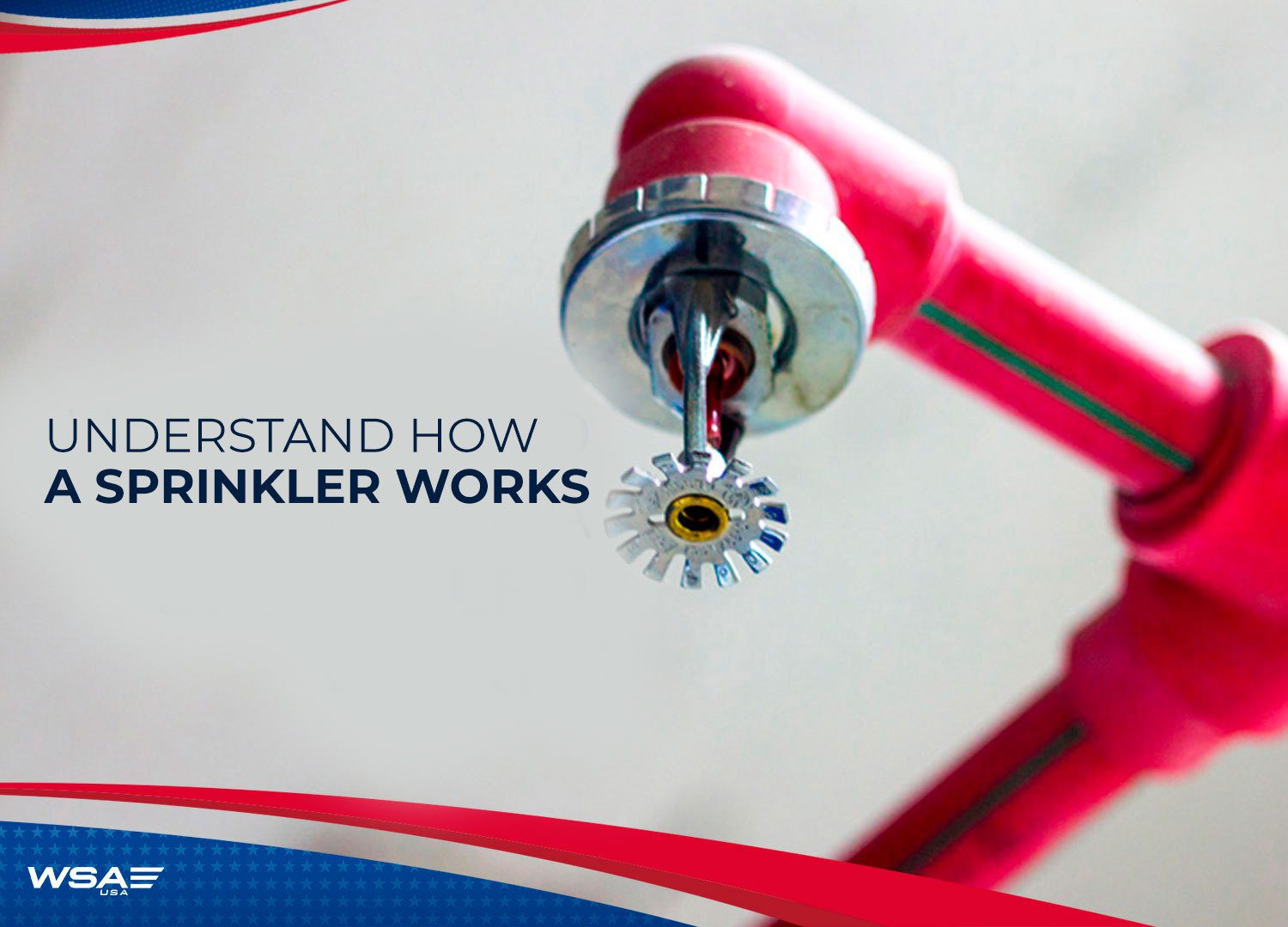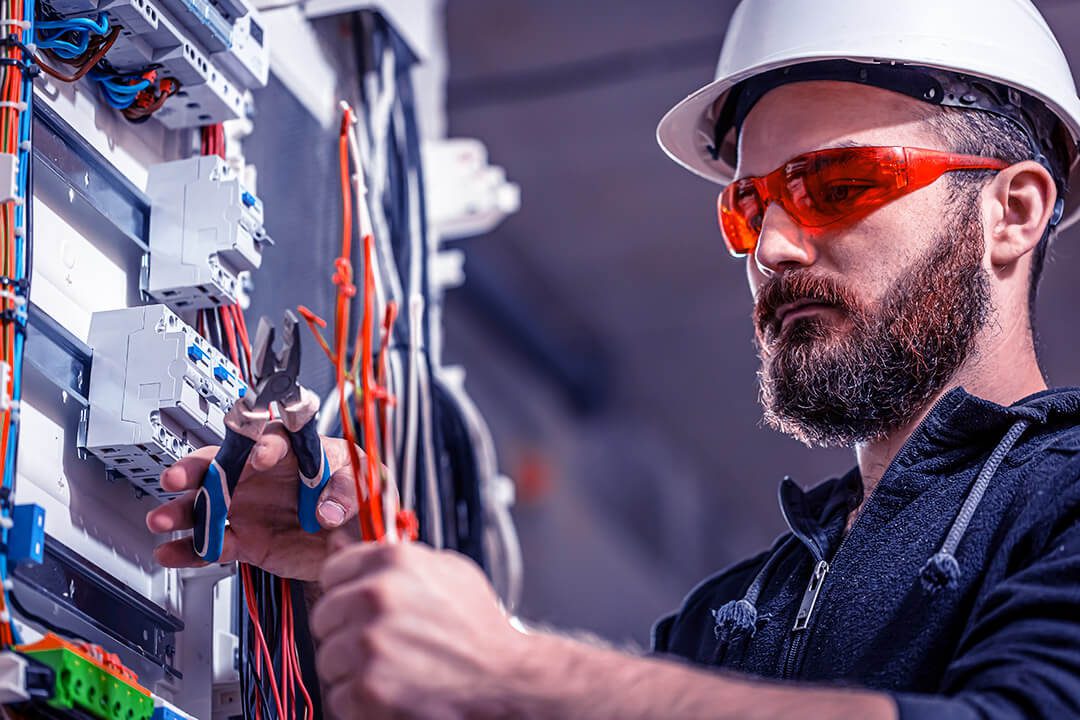The first thing you need to know about the true significance of a sprinkler is how it works. After all, when it comes to fire prevention, care and knowledge about technology are important.
Therefore, in this blog we describe how a sprinkler works.
How does a sprinkler work?
The operation of a sprinkler is to some extent quite simple. However, the engineering developed for it to work properly is quite high. This makes this equipment indispensable in the protection of assets and people.
Features and Installation Modes:
First and foremost, it is very important that you understand the characteristics of the sprinkler and how it is installed. We can say that the sprinkler has three essential components:
• Thermosensitive Element;
• Shutter;
• Deflector
The Sprinkler usually has an ampoule. This ampoule has a thermosensitive liquid inside. Which means that the ampoule will change as the heat excites the Heat Sensitive Element. This liquid expands when the temperature rises, releasing the moving parts of the sprinkler and allowing the passage of water.
The deflector is responsible for forming the sprinkler’s discharge pattern when it is triggered. Known as the “umbrella pattern” for spray-type sprinklers.
The shutter is the element that prevents water from escaping. It is kept pressed on the sprinkler’s water outlet hole by the thermosensitive element and the sprinkler body.
As for the installation, the sprinkler is installed in the pendent upward (or upright) position, or even in the lateral position. Usually in a pipe with pressurized water. Thus, when the shutter breaks, water will be poured into the room.
When the fire starts, the thermosensitive element is heated as a result of the plumes of heated gases. This heating generates the expansion/dilation of the liquid inside the ampoule causing it to rupture.
Sprinklers typically have three or more moving parts. For example, we can mention the obturator, ampoule and the sealing element.
The ampoule, in addition to having the function of being the thermosensitive element, it is responsible for holding the obturator so that it seals the passage of water.
When the ampoule ruptures, the pressure of the water inside the pipe ejects the obturator. When this happens, water begins to flow through the sprinkler orifice towards the deflector/diffuser. Which allows the firefighting process to kick in.
When the water flows through the sprinkler orifice, it does not yet have a defined discharge pattern. Specifically, the pattern would resemble a conical jet.
However, once the water hits the diffuser, the design of the diffuser fins is responsible for building the sprinkler’s discharge pattern. Forming an “umbrella” of sorts for spray-type sprinklers.
It is the diffuser that is responsible for spreading the water evenly in the area protected by the sprinkler. Ensuring that the water application density is met.
Due to this, the floor or the reference level, receives a certain volume of extinguishing agent which comes in the form of a sheet of water, responsible for controlling the growth of the fire.
The operation of the sprinkler system at the right time is very important for it to control the fire, avoiding widespread combustion and the formation of toxic and asphyxiating gases. It maintains the proper oxygen level in the air as well as the ambient temperature to guarantee adequate time for the abandonment of the building. Which will facilitate the fight by the brigade or fire department. Depending on the fluid dynamics of the fire, adjacent sprinklers may activate to help control the fire.
Important points about how a sprinkler works
Now that we’ve covered how a spray-type sprinkler works, here are some additional important things to keep in mind regarding this type of safety equipment:
• The “used” sprinkler must be replaced: Once a sprinkler starts working, it can no longer be installed and used. This means you will need to install a new sprinkler in place to restore the system. This is why it is so important to have replacement sprinklers.
• The sprinkler is activated by temperature, not by smoke: It is worth mentioning that the sprinkler is activated by temperature and not by the mere existence of smoke or harmful gases in the environment. This difference between them is very important. After all, depending on which material is in combustion, the production of smoke or toxic and asphyxiating gases can pose a risk to people before there is a sufficient amount of heat to activate the sprinkler.
• Only the sprinkler on which the temperature rises will be activated: Another very important point which not a lot of people may know, is that when a sprinkler goes into action it does not mean that those nearby will also go into action. Only the sprinklers that have contact with certain temperature levels will be activated. This mechanism can ensure a reduction in maintenance costs, and preventing the flow of water from damaging equipment. It can also keep safe the furniture and other materials that were not on fire. Therefore, the sprinkler acts in an optimized and intelligent way, focusing its efforts on what really matters.
• A system activation alarm is another benefit of the sprinkler: When water begins to flow in the pipe, an alarm must be issued by the building’s alarm control panel or through the system’s hydraulic gong. This alarm allows the building’s emergency brigade to have the perception that an accident is in progress. So that they can act efficiently and effectively following the emergency action plan. Which may or may not trigger the need for external help, usually by part of the local fire brigade.
Do you see how a sprinkler works and how important it really is for a fire prevention process?
After all, it is a technological equipment with a very interesting engineering. Which offers protection and efficiency. Click here (insert the link which, when clicked, will take you directly to the WSA website) and see the various and most efficient sprinklers.


